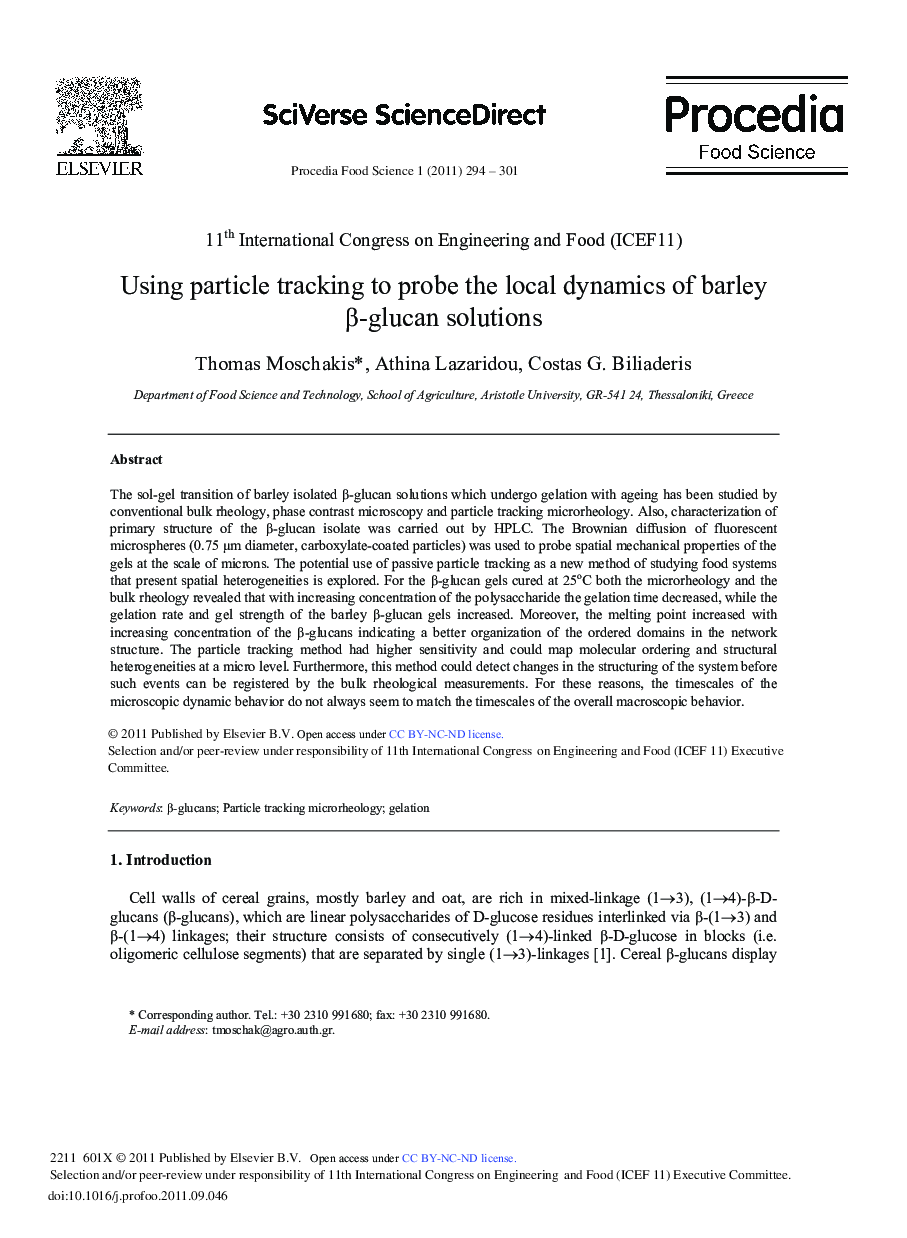| Article ID | Journal | Published Year | Pages | File Type |
|---|---|---|---|---|
| 1264954 | Procedia Food Science | 2011 | 8 Pages |
The sol-gel transition of barley isolated β-glucan solutions which undergo gelation with ageing has been studied by conventional bulk rheology, phase contrast microscopy and particle tracking microrheology. Also, characterization of primary structure of the β-glucan isolate was carried out by HPLC. The Brownian diffusion of fluorescent microspheres (0.75 μm diameter, carboxylate-coated particles) was used to probe spatial mechanical properties of the gels at the scale of microns. The potential use of passive particle tracking as a new method of studying food systems that present spatial heterogeneities is explored. For the β-glucan gels cured at 25oC both the microrheology and the bulk rheology revealed that with increasing concentration of the polysaccharide the gelation time decreased, while the gelation rate and gel strength of the barley β-glucan gels increased. Moreover, the melting point increased with increasing concentration of the β-glucans indicating a better organization of the ordered domains in the network structure. The particle tracking method had higher sensitivity and could map molecular ordering and structural heterogeneities at a micro level. Furthermore, this method could detect changes in the structuring of the system before such events can be registered by the bulk rheological measurements. For these reasons, the timescales of the microscopic dynamic behavior do not always seem to match the timescales of the overall macroscopic behavior.
